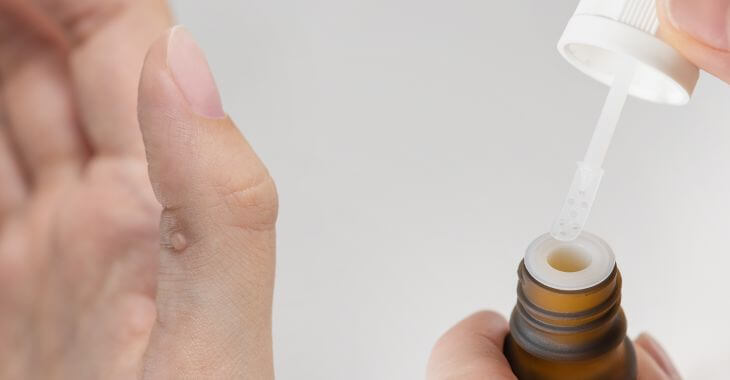What You Need to Know About Spongiotic Dermatitis

Spongiotic dermatitis is a common skin condition characterized by inflammation, redness, itching, and the formation of blisters or pustules. To provide a better understanding of this skin disorder and how to manage it effectively, the following are some of the symptoms, causes and treatments.
Symptoms of Spongiotic Dermatitis
Spongiotic dermatitis, also known as eczema or dermatitis, presents a range of symptoms that can vary in severity. The most common symptoms of subacute spongiotic dermatitis include:
- Itching (Pruritus): Intense itching is a hallmark symptom of spongiotic dermatitis. It can be so severe that it leads to excessive scratching, further exacerbating the condition.
- Redness (Erythema): Affected skin often appears red or flushed, particularly in acute cases. Chronic spongiotic dermatitis may present with more persistent redness.
- Blisters or Pustules: Small fluid-filled blisters or pustules may develop on the skin’s surface, particularly in acute or allergic contact dermatitis. These may ooze clear or yellowish fluid.
- Swelling (Edema): Inflamed skin may become swollen and take on a thicker, rough texture.
- Crusting and Scaling: As the condition progresses, the affected areas may develop scales or crusts on the surface.
- Oozing and Weeping: In severe cases, the skin can weep or ooze, leading to a sticky or moist appearance.
- Pain and Discomfort: In some cases, spongiotic dermatitis can cause pain, tenderness, or a burning sensation in the affected areas.
The distribution of these symptoms can vary depending on the type and cause of spongiotic dermatitis. It often occurs in specific regions of the body, such as the folds of the skin, including the wrists, elbows, behind the knees, and the neck, but it can affect any area of the body.
Acute Spongiotic Dermatitis
Spongiotic dermatitis can be classified into different types based on its cause and presentation. One of the most common is acute spongiotic dermatitis. This is the initial and most severe stage of spongiotic dermatitis. It is characterized by intense itching, redness, blistering, and oozing of fluid from the skin.
Treatments for Spongiotic Dermatitis
The treatment of spongiotic dermatitis aims to alleviate symptoms, reduce inflammation, and prevent future flare-ups. The choice of treatment depends on the type, severity, and cause of the condition. Here are some common approaches to managing spongiotic dermatitis:
- Topical Steroids: Topical corticosteroids are the mainstay of treatment for spongiotic dermatitis. They help reduce inflammation, itching, and redness. The strength and type of steroid depend on the severity of the condition and the affected area. Lower-potency steroids are used for sensitive areas like the face and genitals, while higher-potency ones may be prescribed for thicker skin on the elbows or knees.
- Emollients and Moisturizers: Regular use of emollients and moisturizers can help maintain the skin’s barrier function and reduce dryness and itching. Creams, ointments, or balms are often preferred over lotions for providing better hydration.
- Topical Calcineurin Inhibitors: These non-steroidal medications, such as tacrolimus and pimecrolimus, can be used to treat atopic dermatitis and other forms of spongiotic dermatitis. They work by suppressing the immune response that causes inflammation.
- Oral Antihistamines: Antihistamines can help relieve itching and discomfort, particularly in cases of severe itching. They are often used in dyshidrotic dermatitis.
- Wet Dressings: Soaking the affected area and applying a wet dressing with a topical corticosteroid or emollient can provide relief and hydration. This approach is sometimes used for acute exacerbations.
- Avoiding Triggers: Identifying and avoiding triggers, such as allergens or irritants, is a crucial part of managing contact dermatitis. This may involve changes in personal care products or lifestyle habits.
- Phototherapy: In some cases, ultraviolet (UV) light therapy may be recommended. It can help manage chronic spongiotic dermatitis and reduce inflammation.
- Oral Medications: For severe or chronic cases, oral corticosteroids or immunosuppressive medications may be prescribed. However, these are typically reserved for specific situations due to their potential side effects.
- Biologic Medications: In some cases, particularly for severe atopic dermatitis, biologic medications like dupilumab may be considered. These drugs target specific components of the immune system to reduce inflammation.
In addition to treatment, preventing recurrence and minimizing flare-ups is a critical aspect of managing spongiotic dermatitis. Foods to avoid and other irritants can trigger a response. Strategies to achieve this include:
- Identifying and avoiding known triggers like foods and allergens.
- Maintaining good skin hygiene with gentle cleansers.
- Using emollients and moisturizers regularly.
- Managing stress, as stress can exacerbate symptoms.
- Wearing protective clothing and sunscreen to shield the skin from irritants and sun exposure.
A dermatologist or primary care doctor can provide a diagnosis for acute spongiotic dermatitis and recommend the right treatment and prevention methods. This can help control the symptoms and severity of this skin condition.

Spongiotic dermatitis can cause redness, itching, and blistering. Proper diagnosis, treatment, and prevention are essential for managing this condition effectively. Consulting a doctor is crucial for developing a personalized treatment plan tailored to the specific type of spongiotic dermatitis.
The information provided on this website, including text, graphics, images, and other materials, is intended solely for informational purposes and should not be used as a substitute for professional medical advice, diagnosis, or treatment.




)